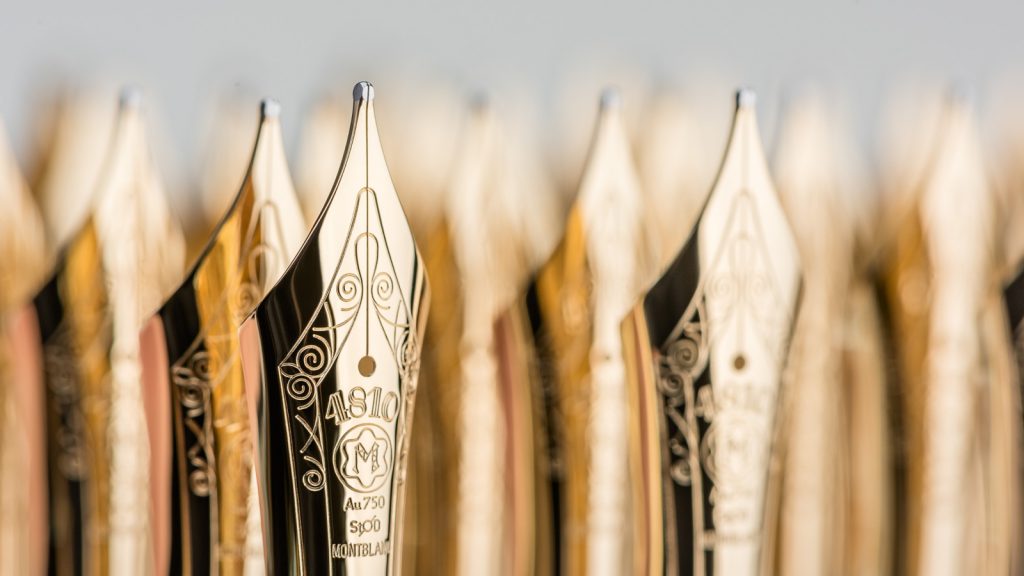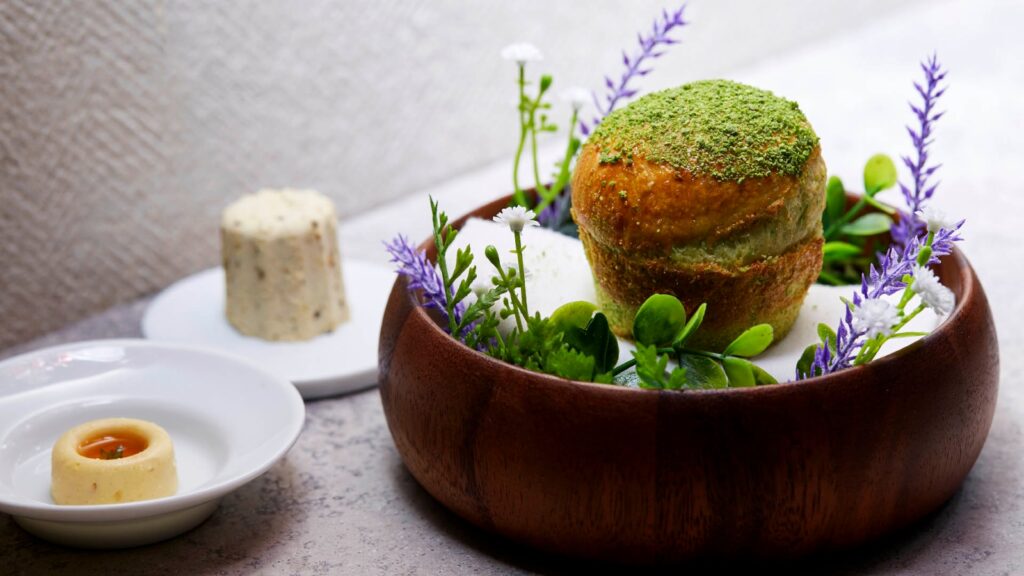In an era when most of the world types or texts hundreds of times a day, beautiful pens seem more like an indulgence than ever. Montblanc, one of the most recognisable names among fountain pen-makers, keeps up its artistic heritage despite our digital fever and infuses every special edition with its own story, to perhaps better write our own.
Handcraftsmanship is found at every step—from carving and setting precious stones to stamping patterns in gold fountain nibs (never steel)—but increasingly sophisticated digital tools are just as essential. The company aims to push the boundaries with every new offering, bringing in experts in resin or leather to create something that has never been done before on a pen. For Montblanc’s base model, the Meisterstück, designers wanted to make a version with leather but no glue on the seam. Creative director Zaim Kamal’s team found an artist in Florence who wraps the steering wheels of racing cars and could stitch the pen’s leather in a way that maintained tension. In some cases, the brand has even had to make miniature versions of an artisan’s tools to work on a challenging new design.
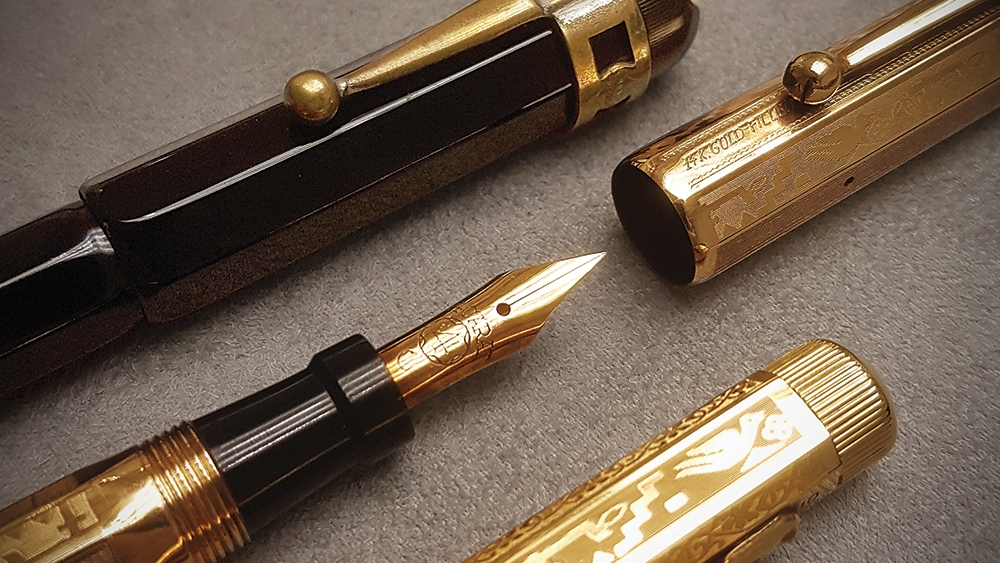
This fall, the Egyptomania pen is being released, with prices running from US$570 (or about RM2,373) for a base model to US$2.2 million (or about RM9.2 million) for the Treasure LE1 edition within the high-artistry collection. “Using a Montblanc won’t make you a better writer,” says Kamal, “but it is a reliable companion. For a brief moment you notice its beauty in some aspect, then you go back to writing and you feel a certain satisfaction.” And with any luck, that excellence begets yet another level of artistry from the scratches of ink on your page.
1. Into the Deep
Creative director Zaim Kamal dug into Montblanc’s archives to discover this octagonal design in the original Egyptomania pen, from the 1920s.
2. Wax On
The engineering team creates a computer model of the designers’ sketches of the new Egyptomania high-artistry version, then prints a wax 3-D prototype of the case—in the shape of a sarcophagus—to assess proportions and scale before moving into metals.
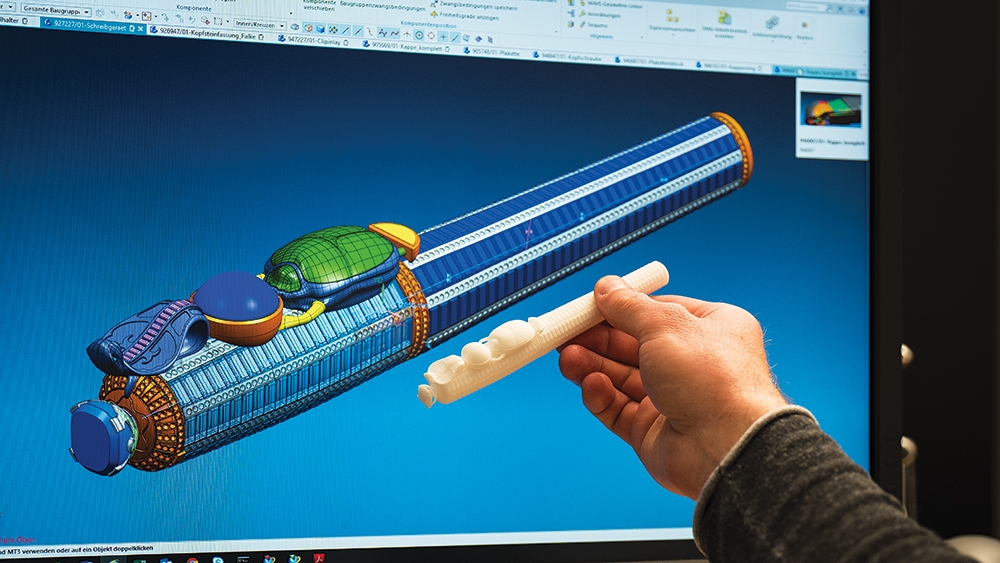
3. Higher Glyphs
Here, an engraver hand-carves excerpts from the Book of the Dead on the gold barrel of the pen. Each hieroglyph has been examined and vetted by a professor of Egyptology.
4. Top Tips
Thirty-five steps go into making every gold nib. The metal comes on a roller, and the shape is stamped out. Then the “4810” and scrollwork are stamped onto each piece. A corundum or diamond disk, rotating at high speed, cuts the fine line into the tip for ink to flow through. Finally, each fountain nib undergoes a test of handwritten figure eights and lines, representing every action a nib will make in its lifetime. The expert testers can tell by just the sound if a nib needs tweaking or tossing.
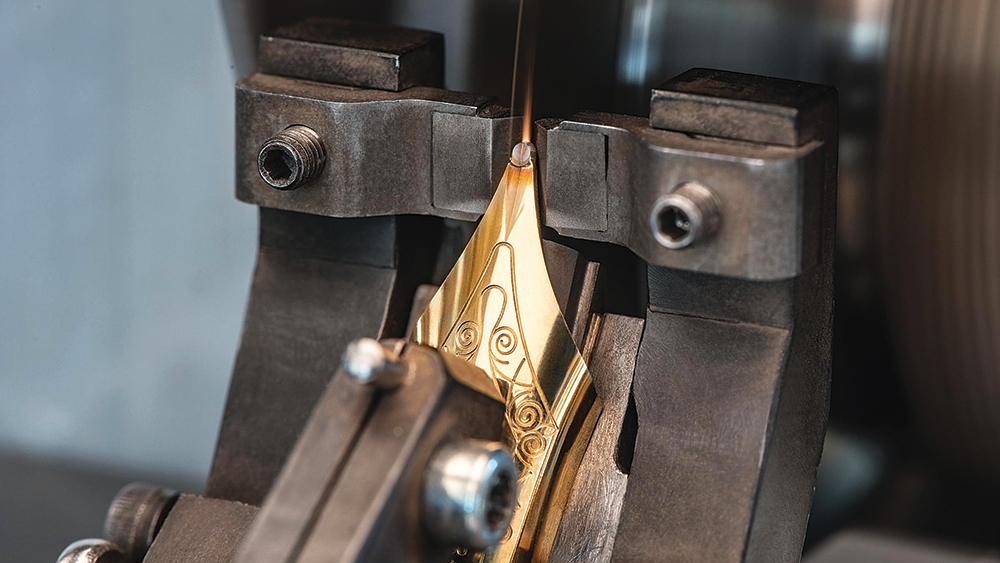
5. Icing on the Cake
A two-carat diamond is set into the pen cap’s top on this high-artistry example of the Egyptomania.
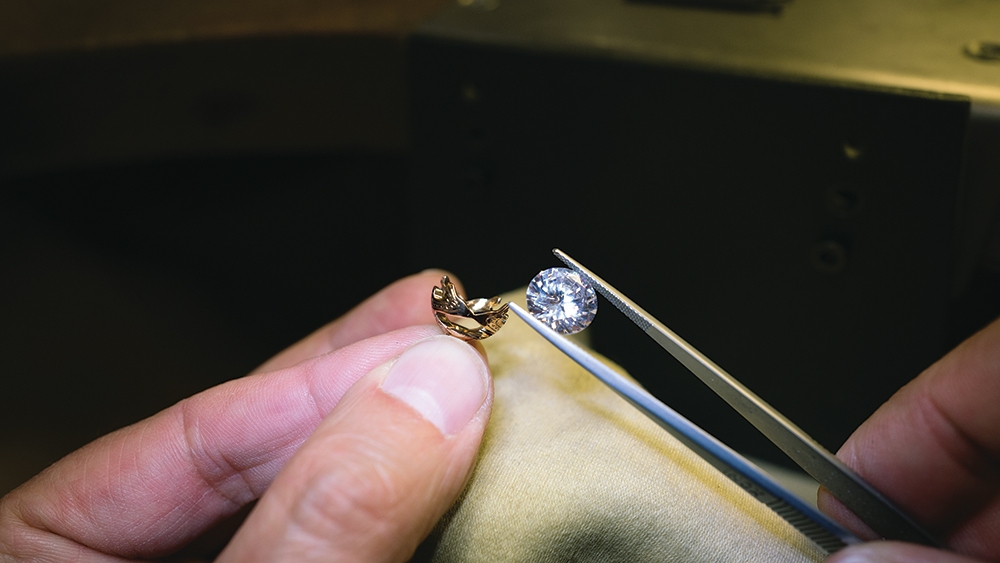
6. Beetle Mania
The finished version, of which there is often just one. Priced at around US$2.2 million, this high-artistry version has an Egyptian-turquoise scarab that, when pressed, opens the sarcophagus to reveal the actual pen inside. The white-gold case has channel-set sapphires running along the sides and up into the head of the snake. The tail of the beetle is made of carneol.
Previously published on Robb Report.
